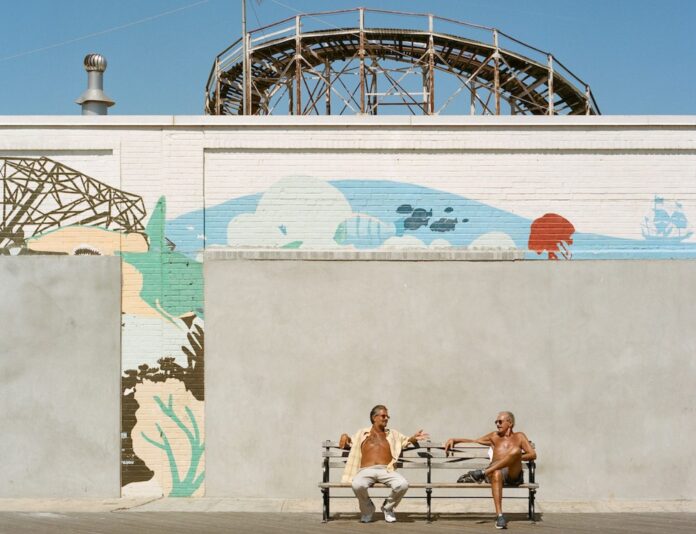Trying to translate the overwhelming thrill of travelling and your experiences into quality photographs is challenging. This article will help you arrive at your destination, equipped with the technical travel photography know-how.
It takes more than a scenic location to take a great travel photo. Below, we explore all the components that create a stunning travel shot. Next time you’re abroad, or even viewing your hometown through a tourist lens — try and incorporate some of these ingredients into your photography routine.
Composition
Composition is an enormous part of travel photography. The way you frame your image offers those who aren’t travelling with you the opportunity to see through your eyes and potentially feel the mood of the moment.
Look for interesting colour combinations and natural happenings in front of you. You can always rely on ‘the rule of thirds’ as a starting point, but don’t be afraid to get creative. Check out Photography Composition: Essential Knowledge for Better Photos for more on compositional techniques.
Perspective
Often, the grandeur of a travel destination is lost without appropriate perspective. For example, the height of a snow-capped mountain is indeterminable without perspective. The sheer height of the mountain is made all the more impressive by the inclusion of a lone figure standing in the foreground. Try incorporating subjects to convey scale within the scene.
Dino Kužnik
Working the Angle
You may have scoffed at the photographer lying in the sand looking up at the palm tree on a tropical beach, but finding and working angles is imperative when it comes to portraying a common scene in a unique way. Don’t photograph just to record the circumstance of being on the beach, but rather, spend time there. Capture your experience.

Light
Try to arrange your tourist activities around dawn and dusk, the best times of the day to photograph. Whether or not you’re trying to capture the idyllic sunrise or sunset, the blue and golden hour light will bathe your subjects and the landscape in a beautiful glow.

Be Kind
If you’re in a foreign country, you need to check local policies and attitudes towards photographing public places. In some locations, you might encounter privacy laws or cultural customs that prohibit you from taking photos. And ensure you’re always smiling politely and remaining inside the boundary of respect.

What to pack
Although you most likely want to be travelling light, taking a few bare photography necessities with you is advised. Keep reading for some travel photography gear recommendations:
Tripod
If buying one specifically for travel, ensure you’re buying a travel tripod. Go figure! Travel tripods are generally made from lighter materials such as carbon fiber and fold up into a compact little carry case. If that’s still too big, consider taking a table tripod.
Filters
Whether it’s a tomato at La Tomatina festival in Spain or someone’s loose water bottle rolling around the overhead stowage on a flight, travelling enhances the risks placed on your gear. Use a UV filter as a way of protecting your lens in transit. CPL and ND filters are also travel kit must-haves as they allow for more creative control and versatility without adding much bulk to your bag.
Camera Bag
A nice padded number will protect your goodies from incidental damage. Urth’s Norite Modular Camera Backpack is the largest in our backpack range and more suited for travel.
As a modular backpack, one of the key features is that it comes with a camera insert that allows you to safely bring along camera gear, or you can take it out entirely if photography isn’t on the agenda
Adapter
Don’t forget to take a power adapter for whichever country you’re visiting to ensure you can charge up your camera’s battery overnight.
Best camera for travel photography
The best camera for travel photography largely depends on where you’re going, and how much room you have in your luggage. For example, you’re not going to want to climb Mount Kilimanjaro in Kenya with a heavy SLR and various telephoto lens options. Keep it simple.
The best camera for travel photography also depends on the extent of your equipment. If you’re fortunate enough to have the luxury of choice, then opt for a camera that’s a little on the lighter side. A compact mirrorless system is going to be easy on the shoulders and leave plenty of space in your luggage for essentials.
If you’re looking to purchase a new travel camera that fits comfortably in your hand yet packs a considerable punch when it comes to performance, be sure to check out any of the Fuji X-Series cameras.
Sporting a timeless retro design, the Fujifilm x100V is used by both professionals and day-to-day hobbyists for its phenomenal optics and easy operation.
The Sony a-Series mirrorless cameras are also great everyday options, and more versatile than the Fujifilm x100V as you can interchange lenses if need be. Sony first introduced the A7 as the world’s first full-frame compact camera back in 2013 into a camera market dominated by heavy SLRs.
For comparison, the Sony A7 tips the scales at a mere 474g while the Canon 5D weighs 895g. Which would you rather travel with?

Best lens for travel photography
The same questions are relevant when deciding which is the best lens for travel photography. Where are you going? And how much luggage do you have?
Does the location inform your equipment choice? For example, if you’re going on safari through South Africa with a wide-angle lens, you’ll need to be extremely up close and personal with the wildlife if you’re hoping to get a decent shot (not advised!). In this case, travelling with a telephoto zoom lens instead would be worth the extra weight in the bag.
But if luggage weight and space is an issue, and your travel destination doesn’t require a specific mode of photography, opt for the most universal option such as a 24-70mm, or a 24-105mm if you want a little extra zoom. Zoom lenses are the perfect travel companion and tick all the boxes from wide-angle landscapes to candid portraits.
One of the best parts of travelling is hitting the street, seeing the city like locals do and translating this experience through your eye, or rather, your lens. Though travelling with a zoom lens may be more applicable across a variety of situations, generally speaking, wide-angle lenses in the 28 – 35mm are the best for street photography. If you’re feeling inspired to saunter through New York City or the streets of Havana, keeping it wide is a fun way to capture the bustling pace.

Taking great street photos
If great street photos are what you seek, then find out more about travel photography gear in The Packing List with Sarah Pannell. And learn How Mandy Sham Shoots Vibrant Colours in Her Photos.
Both Pannell and Sham share a unique vision when it comes to street photography composition. Foregoing the traditional wide-angle lens, Pannell and Sham find their decisive moments through longer lenses and through the patience of being fully immersed in a place.
Time to hit the road
Keeping it simple, with one camera and one lens, forces you to work within parameters and can ultimately help you progress as a photographer. Travelling is about opening yourself up to new possibilities and the same goes for travel photography. Be present. Authentic experiences resonate with audiences. Be aware of your senses. Follow your nose. Follow the light. Find your moments.
Aaron Chapman
Aaron Chapman is an artist and writer based on the Gold Coast, Australia working across a range of mediums including photography, sculpture and public art. Chapman’s work is motivated by themes of home and memory, and in particular, childhood.










